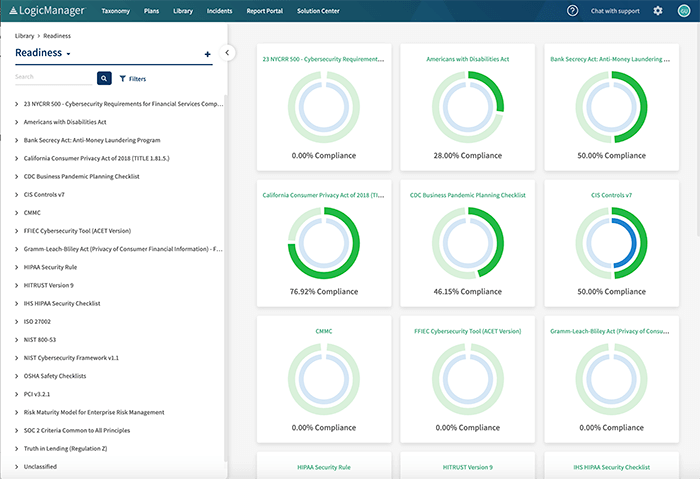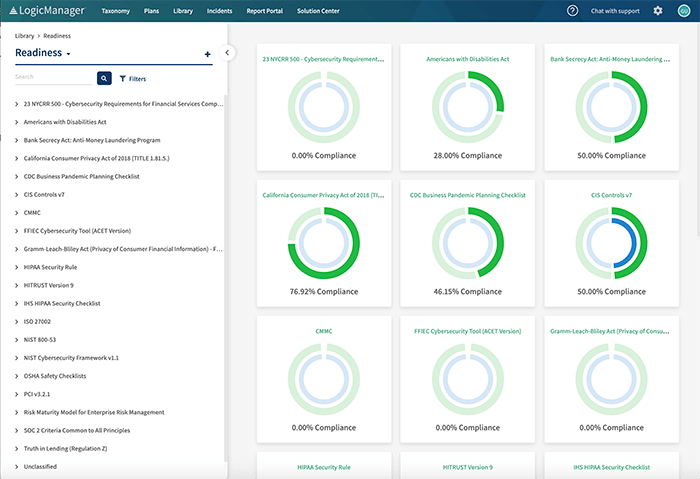In today’s fast-paced and increasingly complex business environment, organizations face an unprecedented deluge of regulatory requirements. From data privacy laws like GDPR and CCPA to industry-specific mandates such as HIPAA in healthcare or Sarbanes-Oxley (SOX) in finance, the landscape of compliance is ever-shifting, expansive, and unforgiving. The consequences of non-compliance are severe, ranging from hefty fines and legal penalties to irreparable reputational damage and loss of customer trust. Manually managing this intricate web of rules and obligations is no longer feasible for most enterprises. This is where Regulatory Compliance Management (RCM) software emerges not just as a tool, but as an indispensable strategic asset.
The Evolving Landscape of Regulatory Compliance
For decades, compliance was often viewed as a necessary evil, a cost center, and a reactive function. Businesses would scramble to meet new regulations as they emerged, often relying on spreadsheets, manual audits, and fragmented processes. However, several factors have fundamentally changed this paradigm:
- Explosion of Regulations: The volume, velocity, and variety of new regulations are constantly increasing. Geopolitical shifts, technological advancements, and public demand for greater transparency have all contributed to this proliferation.
- Increased Scrutiny and Enforcement: Regulatory bodies worldwide are more empowered and more vigilant than ever before. They are quick to impose significant penalties, and the public’s awareness of corporate misconduct is at an all-time high.
- Globalization: Companies operating across multiple jurisdictions must contend with a patchwork of international, national, and local laws, each with its unique nuances and requirements.
- Technological Advancements: While technology drives many new regulations (e.g., data privacy), it also offers sophisticated solutions to manage them. The rise of big data, AI, and cloud computing has both complicated and simplified compliance efforts.
- Interconnected Risks: Compliance risks are no longer isolated. A lapse in one area, such as cybersecurity, can quickly lead to data privacy violations, financial penalties, and a cascade of other regulatory issues.
These challenges necessitate a proactive, integrated, and technology-driven approach to compliance. This is precisely what Regulatory Compliance Management software aims to provide.
What is Regulatory Compliance Management Software?
Regulatory Compliance Management (RCM) software is a specialized category of enterprise software designed to help organizations systematically identify, track, manage, and report on their adherence to various regulatory requirements, internal policies, and industry standards. It centralizes compliance-related information, automates tasks, streamlines workflows, and provides a unified view of an organization’s compliance posture.
Often part of a broader Governance, Risk, and Compliance (GRC) platform, RCM software shifts compliance from a reactive, manual burden to a proactive, integrated, and strategic advantage. It empowers businesses to not only meet their obligations but also to build a culture of compliance that permeates every level of the organization.
Key Features and Functionalities of RCM Software
A robust RCM software solution typically incorporates a suite of features designed to address the multifaceted nature of compliance management:
-
Regulatory Intelligence & Mapping:
- Content Feeds: Integrates with databases of regulatory updates, legal frameworks, and industry standards, providing real-time alerts on changes.
- Requirement Mapping: Allows organizations to map specific regulatory requirements to internal controls, policies, and business processes, identifying gaps and overlaps.
-
Policy and Procedure Management:
- Centralized Repository: Provides a single, secure location for all organizational policies, procedures, and guidelines.
- Version Control: Ensures that only the latest approved versions of documents are accessible, with a clear audit trail of changes.
- Distribution & Attestation: Automates the distribution of policies to relevant employees and tracks their acknowledgment and understanding, crucial for demonstrating due diligence.
-
Risk Management:
- Risk Identification & Assessment: Tools to identify potential compliance risks, assess their likelihood and impact, and prioritize them based on organizational risk appetite.
- Risk Mitigation & Monitoring: Facilitates the development and implementation of controls to mitigate identified risks, with ongoing monitoring to ensure effectiveness.
-
Incident Management:
- Reporting & Tracking: A structured system for employees to report compliance incidents, breaches, or violations.
- Investigation & Remediation: Tools to manage the investigation process, track remediation efforts, and ensure timely resolution, minimizing impact and preventing recurrence.
-
Audit Management:
- Audit Planning & Scheduling: Helps plan internal and external audits, defining scope, objectives, and timelines.
- Evidence Collection: Streamlines the collection and organization of evidence required for audits, reducing manual effort.
- Findings & Action Tracking: Manages audit findings, tracks corrective actions, and monitors their completion, ensuring continuous improvement.
-
Reporting and Analytics:
- Dashboards & Visualizations: Provides clear, intuitive dashboards that offer real-time insights into the organization’s compliance status.
- Customizable Reports: Generates reports for management, boards, and regulatory bodies, demonstrating compliance posture, risk exposure, and control effectiveness.
- Performance Metrics: Tracks key performance indicators (KPIs) related to compliance, helping identify trends and areas for improvement.
-
Training and Awareness:
- Learning Management System (LMS) Integration: Often integrates with or includes modules for delivering compliance training to employees.
- Tracking & Certification: Tracks completion rates, test scores, and certifications, proving that employees have received and understood necessary compliance training.
-
Document Management:
- Secure Storage: Provides secure, encrypted storage for all compliance-related documents, contracts, licenses, and certifications.
- Access Control: Granular permissions ensure that only authorized personnel can view or modify sensitive documents.
Benefits of Adopting RCM Software
The implementation of RCM software offers a multitude of strategic and operational advantages:
- Enhanced Risk Mitigation: By providing a structured framework for identifying, assessing, and mitigating compliance risks, RCM software significantly reduces the likelihood of violations, fines, and legal action.
- Improved Efficiency and Cost Savings: Automation of manual tasks such as data collection, reporting, and policy distribution frees up compliance teams to focus on higher-value activities. This leads to reduced operational costs and more efficient resource allocation.
- Greater Transparency and Audit Readiness: A centralized system provides a single source of truth for all compliance activities, making it easier to demonstrate adherence to regulations during audits and inspections. This fosters trust with regulators and stakeholders.
- Better Decision Making: Real-time data and comprehensive reports enable management to make informed decisions about compliance strategies, resource allocation, and risk management.
- Reputation Protection: Proactive compliance management safeguards an organization’s brand reputation and maintains public trust, which can be severely damaged by compliance failures.
- Scalability and Adaptability: RCM software solutions are designed to scale with an organization’s growth and adapt to changes in the regulatory landscape, ensuring long-term compliance effectiveness.
- Fostering a Culture of Compliance: By making compliance accessible, understandable, and integrated into daily operations, RCM software helps embed a culture where every employee understands their role in upholding regulatory standards.
Who Needs RCM Software?
Virtually any organization facing significant regulatory burdens can benefit from RCM software. However, it is particularly critical for:
- Financial Services: Banks, investment firms, insurance companies dealing with anti-money laundering (AML), Know Your Customer (KYC), Basel III, Dodd-Frank, etc.
- Healthcare: Hospitals, clinics, pharmaceutical companies, and medical device manufacturers dealing with HIPAA, FDA regulations, and patient data privacy.
- Energy & Utilities: Companies subject to environmental regulations, safety standards, and critical infrastructure protection.
- Manufacturing: Organizations dealing with product safety, environmental regulations, supply chain compliance, and labor laws.
- Technology Companies: Firms handling vast amounts of user data, subject to GDPR, CCPA, and other data privacy laws, as well as cybersecurity regulations.
- Government Agencies: Public sector entities with complex legal and ethical mandates.
Challenges and Considerations for Implementation
While the benefits are clear, implementing RCM software is not without its challenges:
- Initial Investment and Ongoing Costs: RCM software can represent a significant upfront investment, along with recurring subscription fees, maintenance, and training costs.
- Integration with Existing Systems: Integrating the RCM platform with legacy systems (ERPs, HR systems, CRM) can be complex and time-consuming.
- Data Migration: Transferring existing compliance data, policies, and risk registers into the new system requires careful planning and execution.
- User Adoption and Training: Employees and stakeholders must be trained to use the new system effectively. Resistance to change can hinder successful implementation.
- Vendor Selection: Choosing the right vendor is crucial. Organizations must evaluate vendors based on industry expertise, software functionality, scalability, support, and security.
- Maintaining Data Accuracy: The effectiveness of RCM software relies heavily on the accuracy and currency of the data it manages. Continuous effort is needed to keep information up-to-date.
Choosing the Right RCM Software
Selecting the appropriate RCM software requires a thorough assessment of an organization’s specific needs, budget, and strategic objectives. Key considerations include:
- Industry-Specific Functionality: Does the software cater to the unique regulatory requirements of your industry?
- Scalability: Can the solution grow with your organization and adapt to future regulatory changes?
- Integration Capabilities: How well does it integrate with your existing IT infrastructure?
- User-Friendliness: Is the interface intuitive and easy for employees to navigate, fostering adoption?
- Reporting and Analytics: Does it provide the depth and breadth of reporting needed for internal and external stakeholders?
- Vendor Reputation and Support: What is the vendor’s track record, and what level of customer support do they offer?
- Security: How does the vendor ensure the security and privacy of your sensitive compliance data?
- Cost-Effectiveness: Does the total cost of ownership align with your budget and deliver a clear return on investment?
The Future of RCM Software
The evolution of RCM software is closely tied to advancements in technology. We can anticipate several key trends:
- AI and Machine Learning: AI will increasingly be used for predictive compliance analytics, identifying potential risks before they materialize, and automating the interpretation of complex regulatory text.
- Blockchain Technology: Blockchain could offer immutable records for audit trails, ensuring transparency and integrity of compliance data.
- Cloud-Native Solutions: Further migration to cloud-based platforms will enhance accessibility, scalability, and collaboration for compliance teams.
- Integrated GRC Platforms: A continued trend towards fully integrated Governance, Risk, and Compliance platforms, providing a holistic view of organizational resilience.
- Real-time Regulatory Intelligence: More sophisticated systems will offer real-time monitoring of regulatory changes, automatically flagging relevant updates and their potential impact.
Conclusion
In an era defined by constant change and heightened scrutiny, Regulatory Compliance Management software has transitioned from a niche tool to a fundamental pillar of sound corporate governance. It provides organizations with the necessary framework to navigate the complex regulatory landscape with confidence, mitigate risks, optimize operations, and protect their reputation. By embracing RCM software, businesses can transform compliance from a daunting obligation into a strategic enabler, fostering trust, ensuring resilience, and driving sustainable growth in the global marketplace. The investment in robust RCM capabilities is no longer optional; it is an imperative for any organization committed to long-term success and ethical operations.

